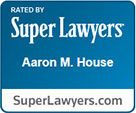Traumatic Brain Injuries send about three million people to hospital emergency rooms every year. A significant number of these individuals are treated and released. Often, that is because doctors do not recognize head injury symptoms. Or, they misinterpret the symptoms as shock from an accident, early-onset dementia, or something else.
Sports-related concussions garner many of the headlines in this area, but statistically, these events only account for a fraction of the brain injuries in Missouri. The top three head injury causes, which are outlined below, cause most of the TBIs in our state.
TBIs are permanent. Once brain cells die, they do not regenerate. As a result, a Kansas City personal injury attorney can often obtain substantial compensation for the victims in these cases. These victims of brain injuries, and their loved ones, need this compensation so they can move on with their lives.
Motor Vehicle Collisions
Car crashes are usually by far the leading cause of TBIs. These events combine all three underlying brain injury causes, which are:
- Trauma: Head injuries are common in car crashes even if the victim is wearing a seat belt. Additionally, car crashes can and do transform small objects in the vehicle, such as cell phones, into high-speed missiles. Frequently, these projectiles strike the victim’s head.
- Motion: Vehicle collisions also cause whiplash. This sudden, whip-like motion of the head and neck does more than cause nerve damage. It also causes the brain to slam repeatedly against the inside both sides of a victim’s skull.
- Noise: Many witnesses state that car crashes sound like loud explosions. Such sudden noises usually trigger shock waves which disrupt brain functions. These injuries could affect passengers who were not otherwise hurt badly, as well as bystanders.
If the tortfeasor (negligent driver) violated a safety law by speeding or making an illegal turn, for example, and that violation substantially caused an injury, the tortfeasor might be liable for damages as a matter of law.
In other cases, victim/plaintiffs can use evidence to establish a lack of reasonable care. Fatigued driving is one such example. If the crash occurred early in the morning or late at night, driver fatigue may be a factor. In fact, driving after being awake for 18 consecutive hours is like driving with a .05% blood alcohol content.
Falls
Unintentional falls are usually right up there with motor vehicle collisions in terms of TBI causation. Falls usually involve only one kind of cause (trauma injury). Yet fall victims obviously do not have seat belts, crash helmets, airbags, or anything else to protect them.
To establish liability for damages, victim/plaintiffs must prove that the landowner owed the victim a legal duty. Missouri law divides landowner duty into three categories, which are:
- Invitee: Many victims are invitees. These individuals have permission to be on the land and they provide a benefit to the owner. That benefit could be economic, like a shopper, or noneconomic, like a party guest. If the victim was an invitee, the landowner had a duty of reasonable care.
- Licensee: These individuals have permission to be on the land, but there is no benefit to the owner. People who walk across parking lots on their way home from the store are usually licensees. Owners only have a duty to warn licensees about latent (hidden) defects, such as a loose handrail.
- Trespasser: If there was no permission and no benefit, the owner generally owed no duty. Exceptions include the attractive nuisance rule and the frequent trespasser doctrine.
Victims/plaintiffs must also prove actual or constructive knowledge (that the owner should have known about the defect). Direct evidence of actual knowledge can come from many different sources, including parking lot maintenance reports. Circumstantial evidence of constructive knowledge usually involves the time-notice rule. If the hazard existed a long time, the owner should have known about it.
Assaults
Legally, assaults are much like falls. Landowners are responsible if they owed a legal duty and knew about the hazard. In this context, the hazard could be inadequate security personnel, non-working security equipment, or burned-out security light.
Victims/plaintiffs must also prove the assault was a foreseeable consequence of the inadequate security personnel, non-working security equipment, or lack of lighting. And a third-party assault can be deemed foreseeable if a similar incident had occurred on the land or on nearby land.
Contact a Dedicated Lawyer
TBIs are often caused because of the carelessness of another person. For a free consultation with an experienced personal injury attorney in Kansas City, contact House Law LLC. Consultations are free, and we do not charge upfront legal fees in injury cases.
Tags: brain injury, traumatic brain injury
Related Posts: Motorcyclist Killed in High-Speed Crash on Highway in South Kansas City Local Family Launched Petition in Favor of Highway Safety Guardrails After Tragic Fatal Crash in Grain Valley Area Three People Hurt in Pile-Up Crash in Kansas City After Tire Falls Off Jeep




